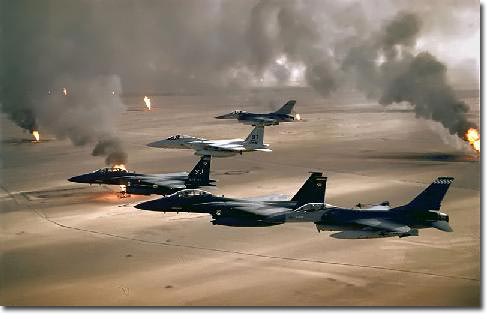In October 2000 Iraq threatened to halt its crude output and suspend oil exports if the United States objected to Baghdad’s demand to be paid in EUR instead of USD.
As a threat, this one wasn’t even original, Saddam Hussein had issued it 3 times in 3 years, the difference this time was that the year before (October 1999) the U.N. cap on Iraqi oil exports was lifted. It could now sell as much oil as it wanted.

The credibility of the threat went in crescendo since under the U.N. oil-for-food program, much of the trades were closed in EUR, which meant that between 2001 and 2003 the country had already received around 26 billion EUR worth of supplies in exchange for 3300M barrels of oil.
Also, EUR was in a rising trend against the USD and the country was earning way more in interests by having their BNP Paribas escrow account in New York in EUR instead of USD.
Then, in 2003, the U.S. risked its international (and also internal) image by entering in a non-sanctioned, unilateral, brutally expensive, non-provoked invasion of Iraq. Why?

Well, according to some conspirators, the main purpose behind the 2nd Iraqi war of 2003, was to prevent Iraqi oil from entering the market in EUR, and therefore threatening the hegemony of the USD as a reserve currency.
The petrodollar is one of the founding pillars of the U.S.’s economic power and therefore fundamental when it comes to its national strategic interests.
For years, Iran followed Iraq’s suite in pushing to have the EUR replace the USD as the currency for international oil trade, which makes total sense since their biggest market is not the USA.

This was exacerbated by the progression in its plans to create the Iranian Oil Bourse, which came to fruition in 2008, with which it wanted to trade oil in other currencies apart from the USD.
In March 2012 Iran announced that the Bourse would no longer trade oil in USD… 4 months later the EU followed the USA into effectively blocking access to Iranian Oil, effectively creating a worldwide embargo that would devastate the country’s finances.
Nevertheless, this didn’t stop Iran. After the sanctions were lifted, the country said it wanted to recover tens of billions of USD it is owed by India and other buyers of its oil, not in USD, but in EUR, as it looks to reduce its dependence on anything North-American.

Not just that, but it signed oil contracts in EUR with Total (France), Cepsa (Spain) and Litasco (Russia). Although it’s one of the World’s largest USD holders, China has always been vociferous regarding the hegemony of USD as a reserve currency.
Since the beginning of this decade (but especially in recent years), China’s crude oil imports have increasingly come from countries outside the OPEC, which made up 65% of the growth in China’s crude imports between 2012 and 2016.
By the end of 2008 China’s gold reserves where around 600t and Russia’s little over 500t. Fast forward to May 2017 again and China’s reserves multiplied themselves 3x (!) to more than 1800t. Guess what? Russia’s reserves also multiplied themselves by 3x to 1700t.

The first thing to be said is that the very existence of some world class currencies implies that reserves must be held in all of them, central banks keep foreign currency in an account or have swap arrangements with other such entities around the world.
Also, paradoxically enough, even though these countries fight the hegemony of the USD, it could be in their interest to hoard USD to purposely weaken their currency, which would contradict any side-effect somewhat.
Likewise, although a weaker dollar might relief some of their debt weight, many countries would still require USD to pay interest and principal on their huge USD-based loans (with help of World Bank and IMF), not to mention developing countries which are cash strapped.

A decreasing demand for USD (in effect de-valuating it against other reserve currencies) would result in an increase in interest rates of USD bonds, a rise which would cause severe budgetary issues to the USA.
Although printing money doesn’t allow you to do whatever you want, it does give you much laissez-faire. It would also decrease significantly the effect of U.S. sanctions, which might impact somewhat the way the country conducts its foreign policy.
Whatever the outcome, it is about time the USA felt what “free market” means when it comes to currency and oil.
Magnus Commodities / ABC Flash Point News 2022.












































